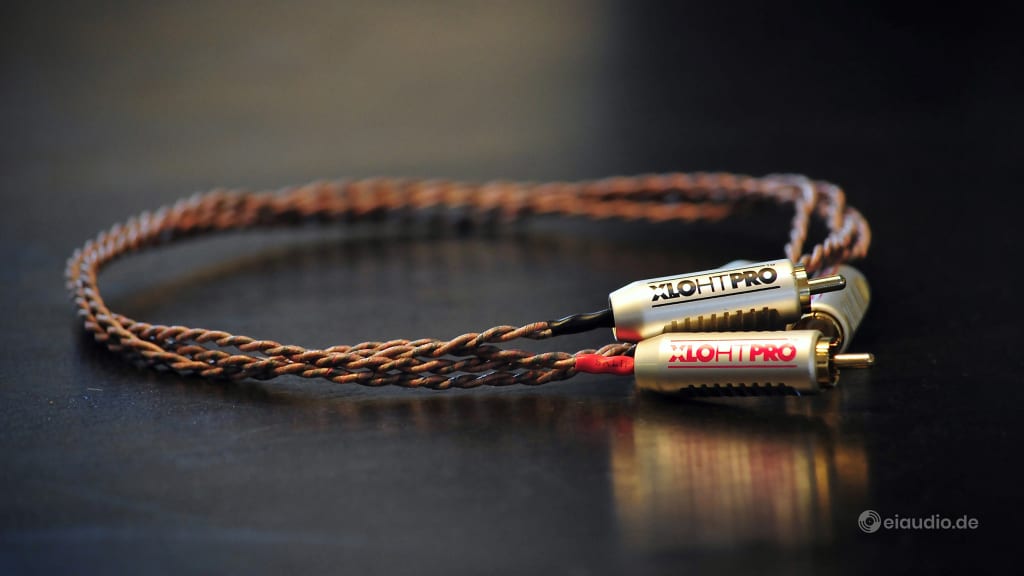Western Electric Silk Solid Core
27/12/2020
Author: Karsten Hein
Category: Gear & Review
Tag(s): Cables
When it comes to historic cables, few names cary the weight or spark the imagination as Western Electric. The company has borne its all-American name since 1872, and, in close proximity of the AT&T golden years, grew to become a giant among giants. From the early federal telegraph network all the way to modern telecommunications, Western Electric has developed cables and electronics for every imaginable purpose. The company founder, Elisha Gray, was even credited with inventing the telephone, simultaneously with Alexander Graham Bell, until losing a court battle against Bell in 1879.
Signal processing and signal transport were among Western Electric's main concerns, and experiments were conducted using different types of wires, construction methods, and dialectics. Depending on their designated position and application, cables needed to be flexible, durable, temperature resistant, resistant to moisture, substances, etc. Sometimes to connect devices over huge distances and sometimes in the tiniest of spaces. At times to be installed in fixed position for eternity, and at times to be constantly moved around. Cable design needs to take many aspects into consideration and is mostly a compromise, considering location, usage and cost.
When it comes to audio cables that are to be arranged behind a home-based HiFi rack, this somewhat limits the need for wear and tear resistance, however, it does pose a challenge in terms of signal homogeneity over a wide frequency spectrum, an optimal ratio of resistance and capacitance, etc. While there is no doubt that many cables will do the trick of making a basic connection by allowing current to flow, this does not mean that they will do so equally well, from a timing and amplitude aspect over all frequencies.
The historic Western Electric cable featured here is made up of two solid strands of high quality copper. Each copper strand is wrapped in silk cloth and the strands are twisted against each other to form a single cable per channel. Silk has some advantages over many other covers in the sense that it does not effect the tonal balance of music signals that are sent through it. Due to its twisted pair construction, outside interference is sufficiently reduced so that no additional foil or mesh is needed in protection. Conventional shielding has a negative effect on agility and dynamics, and better types of shielding often come at a higher price.
This particular Western Electric was built by using XLO Electric XLO HT PRO RCA plugs. While the quality is not bad, there was a time when they could be found cheaply online. The plugs are 24K gold plated and of light weight. The overall result is very pleasing in many ways. When used in primary position between CD player and amp, there is no comparison with a conventional shielded multi-core design. The Western Electric simply plays in a different league. And even in the braided or twisted pair category, the silk cable can hold its own.
Having run the Western Electric Silk between our Marantz CD-17 and DB1 preamplifier for close to a year, I am well-accustomed to its abilities, and finding an upgrade to it proved to be a challenge, indeed. The Western Electric produces a true-to-life natural sound that had me hooked from the first moment I heard it. Like most solid core wires it is direct and forward sounding, but, despite this, it almost never came across as aggressive. It offers great speed and clarity with slight vocal emphasis. Due to the amount of musical detail, I found it most realistic to listen at moderate volumes. The Western Electric is a great companion for tube amps.
I have read some place that the Western Electric does not provide its own signature. From my own comparisons between cables I am not sure I can agree. Without criticising its performance, which is phenomenal, I found the following characteristics to shine through: There is a slight and pleasant high frequency roll-off which becomes obvious when listening to cymbals for instance. On the positive side, this contributes to a more amiable sound. And voices are slightly pronounced. Bass notes are portrayed accurately, however, deep bass is not this cables particular strength. As such, the Western Electric is great for listening to natural and acoustic music at realistic volumes. Jazz, Blues, Folk, Classic all work great. If you purchase NOS, make sure to allow for 80-100 hours of break-in time. If you know and have some experience with this cable and would like to share this, please leave a comment below.
Specifications
- Cable Lengths: 100cm
- Cable Construction: Twisted Pair
- Wire Diameter: 22AWG (0,644mm)
- Wire Material: Solid Core Copper
- Dialectic: Silk Cloth
- Handling: bi-directional, flexible-resilient
- Termination: XLO HT-PRO RCA plug
- Position tested: source to pre (not phono)




